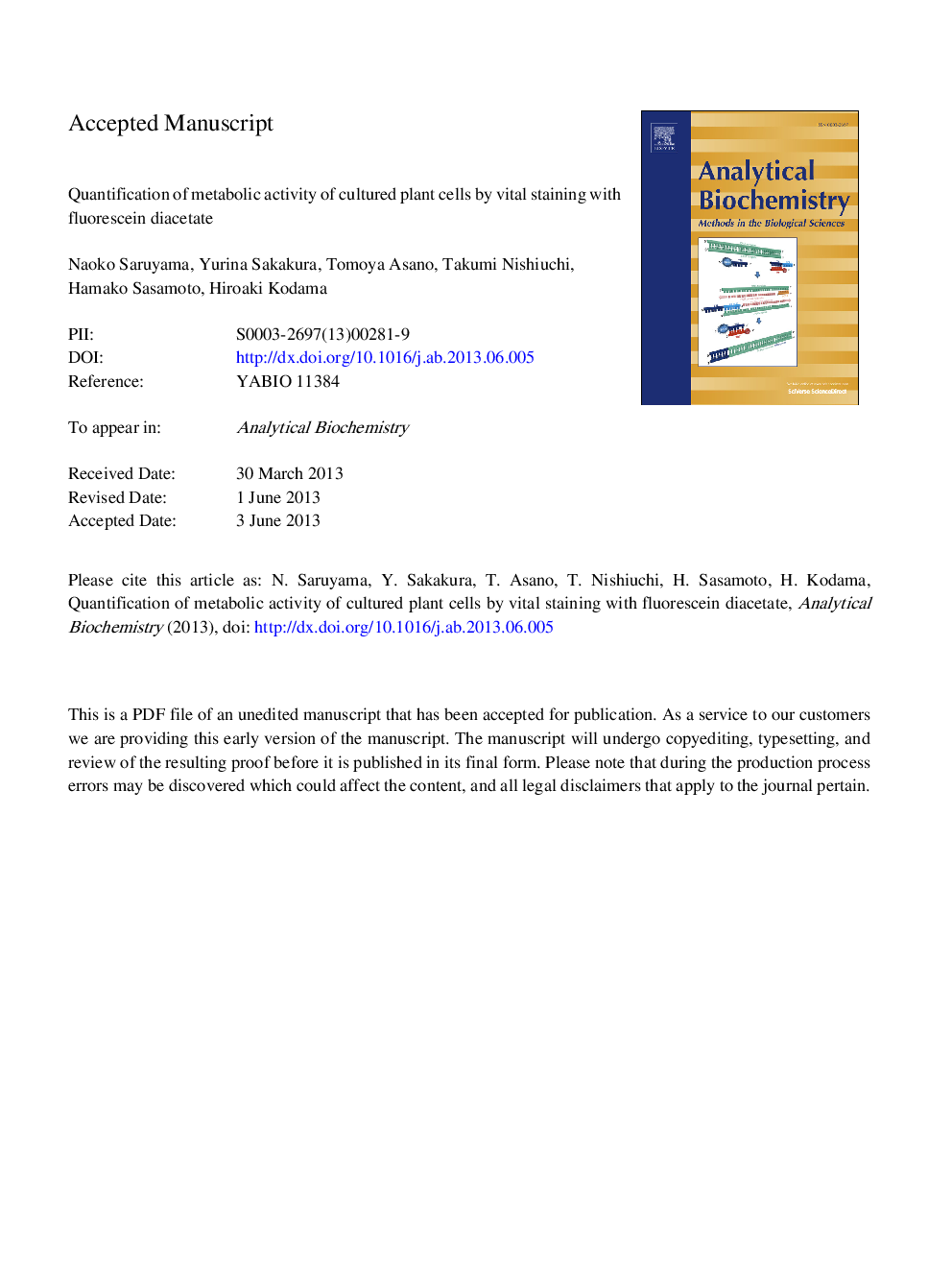| Article ID | Journal | Published Year | Pages | File Type |
|---|---|---|---|---|
| 10532656 | Analytical Biochemistry | 2013 | 18 Pages |
Abstract
The metabolic activity of suspension cultures of Sonneratia alba cells was quantified by measurement of the hydrolysis of fluorescein diacetate (FDA). FDA is incorporated into live cells and is converted into fluorescein by cellular hydrolysis. Aliquots (0.1-0.75 g) of S. alba cells were incubated with FDA at a final concentration of 222 μg/ml suspension for 60 min. Hydrolysis was stopped, and fluorescein was extracted by the addition of acetone and quantified by measurement of absorbance at 490 nm. Fluorescein was produced linearly with time and cell weight. Cells of S. alba are halophilic and proliferated well in medium containing 50 and 100 mM NaCl. Cells grown in medium containing 100 mM NaCl showed 2- to 3-fold higher FDA hydrolysis activity than those grown in NaCl-free medium. When S. alba cells grown in medium supplemented with 50 mM NaCl were transferred to fresh medium containing 100 mM mannitol, cellular FDA hydrolysis activity was down-regulated after 4 days of culture, indicating that the moderately halophilic S. alba cells were sensitive to osmotic stress. Quantification of cellular metabolic activity via the in vivo FDA hydrolysis assay provides a simple and rapid method for the determination of cellular activity under differing culture conditions.
Related Topics
Physical Sciences and Engineering
Chemistry
Analytical Chemistry
Authors
Naoko Saruyama, Yurina Sakakura, Tomoya Asano, Takumi Nishiuchi, Hamako Sasamoto, Hiroaki Kodama,
